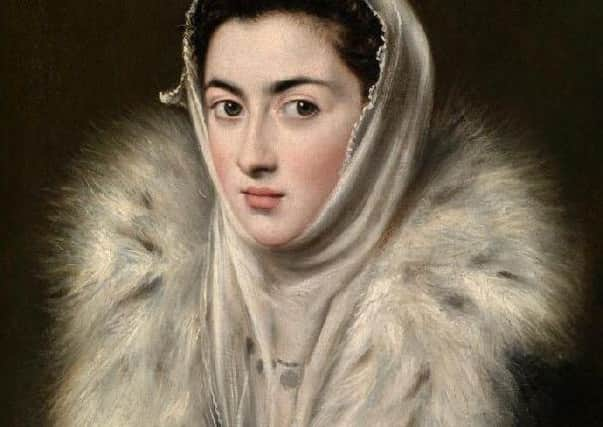Detective work resolves riddle over Glasgow's famous 'Lady in a Fur Wrap' painting


A team of international experts involved in a four-year investigation into Glasgow's famous "Lady in a Fur Wrap," long believed to have been painted by the Greek-born Spanish Renaissance painter El Greco, have ruled that it was actually by 16th century Spanish artist Alonso Sánchez Coello.
They have also uncovered evidence that the artist may have drawn several layers of other items of clothing before adding the famous fur wrap to the painting - which they say were created using a "considerably different" technique to those found in El Greco's work.
Advertisement
Hide AdAdvertisement
Hide AdBut prolonged attempts to find out who the mysterious woman in the painting actually is have drawn a blank.
El Greco experts from the Prado Museum in Madrid joined forces with senior figures in the Glasgow Museums Services and Glasgow University to carry out lengthy technical and scientific studies of the painting and other work by El Greco and his contemporaries.
The painting was donated to the city, in 1967 by the family of the 19th century art historian and collector Sir William Stirling Maxwell. He snapped up the Lady in a Fur Wrap when it came up for sale in London in 1853, five years after the end of its display in the 'Spanish Gallery' at the Louvre in Paris, where it was unveiled to huge acclaim in 1838.
Art historians have debated for more than a century whether the painting is the work of El Greco. The Glasgow Museums Service had previously insisted there were “no convincing arguments” to disprove its traditional attribution.
But senior officials today confirmed they would be creating "fresh interpretation" for the painting when it goes back on display at Pollok House, the historic seat of the Maxwell family in Glasgow, next summer.
Duncan Dornan, head of the Glasgow Museums Service, said: "Through our partnership with leading experts in the field of Spanish art we have gained a much fuller understanding and appreciation of this important painting.
"After detailed analysis and examination, we are closer to understanding who painted one of our most popular and internationally recognised artworks’. ‘
"The Lady in a Fur Wrap is a fascinating portrait. This technical study has also, excitingly, revealed unexpected elements such as traces of underdrawing hidden behind the surface.
Advertisement
Hide AdAdvertisement
Hide Ad"These suggest a different style of dress for the Lady, before the eye-catching fur cape was introduced.
"These are all elements that continue to attract debate and although we now understand who painted the work the identity of the mysterious lady is still unanswered.
"It is certain the Lady in a Fur Wrap will continue to intrigue and inspire for generations to come."
Dr Mark Richter, of Glasgow University, who coordinated the scientific investigation in the city, said: "Through technical analysis of the painting’s surface, as well as analysis of microscopic paint samples, we now know much more about how this most enigmatic portrait was painted and the relationship of its materials and methods of creation to those of other important pictures in this and other collections.
"All the evidence indicates that the materials and techniques used in the creation of the painting are consistent with 16th century practice in Spain.
"However, the composition of the layers in the Lady in a Fur Wrap is different from paintings we know to be by El Greco. Most paintings are built up using multiple layers.
"In the 16th century, when this painting was made, these layers normally included a ground layer, a priming layer, multiple paint layers and finally varnish.
"Technical examination carried out by the Museo del Prado and the University of Glasgow has allowed us to examine these layers in detail.
"The composition of the layers in the Lady are considerably different from the layers seen in autograph works by El Greco.